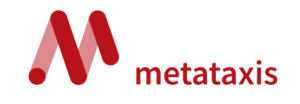By Siobhan King |
June 21, 2024
Metataxis has worked on many information governance projects.
Senior Consultant and Governance expert here at Metataxis, Siobhan King, shares her experience of introducing a clear information governance framework for a topflight law firm and the benefits it can deliver.
Read on:
How it all started
It’s just after 11:00am on a Thursday morning at a topflight law firm. The Head of Risk is on their knees, riffling through cabinets looking for misplaced files required for a client audit. They are ready to rip into the errant legal secretary who has been careless enough to lose the files and arrogant enough to ignore instructions, warnings and pleas from their Operations Manager. How did things come to this?
This is precisely what our client was thinking when they called Metataxis to talk about their information governance framework. Perhaps the incident with the Head of Risk getting grubby marks on their trousers knees wasn’t the exact reason that prompted reaching out to us, but it certainly came up in our first conversation with this client! The law firm knew that they had a comprehensive set of policies and procedures in place to address information governance, but also recognised that sometimes there was a disconnect between the framework and how things happened in the real world.
The next steps
Metataxis was invited to review the existing information governance policy and practices, conduct a thorough gap analysis and subsequently deliver a set of valid recommendations and guidelines to ensure the firm had a comprehensive and compliant information governance framework in place.
You can get a lot of clues from one anecdote. Even before completing our document analysis and carrying out interviews with key staff, we knew we would want to spend some time looking at:
– Review existing policy
– Thorough gap analysis
– Clear recommendations
- What roles and responsibilities have been assigned within the existing framework
- What obligations does the firm have to stakeholders regarding information governance and what are the drivers that will motivate employees to do the right thing
- What policies are in place and most importantly, how are these delivered to staff
- What escalation or enforcement policies and practices are there when there are issues of non-compliance
- What regular monitoring and reporting activities are in place to measure compliance and improvement
It’s just after 11:00am on a Thursday at a topflight law firm. The Head of Risk has just finished a briefing with their newly appointed Information Governance Officer to understand the overall position of the firm regarding information governance maturity.
The Information Governance Officer has been working very closely with an experienced and capable Project Manager to put together a business case for a new retention management system, fully supported by a global information governance operating model.

